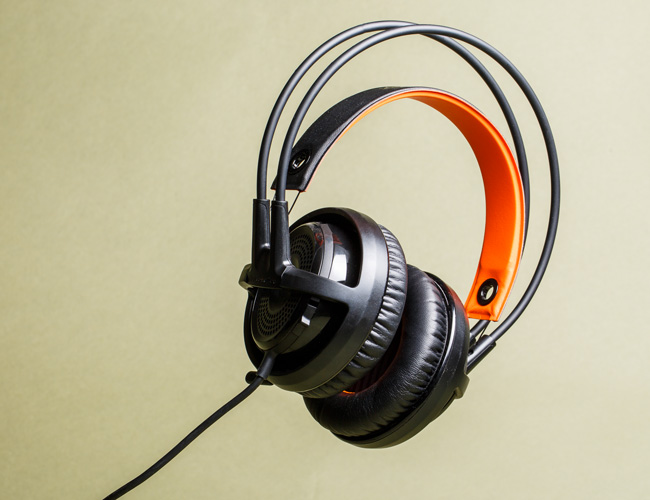Real twists on earbud technologies are few and far between. Wireless was a predictable step; noise-canceling is becoming de rigeur. But Sennheiser has managed a novel and surprising spin of its own with its new Ambeo Smart Headset ($300). In fact, it’s almost literally head-spinning, with 360-degree audio recording capability in addition to its baseline high-quality performance as a conventional headset.
The good: Excellent audio quality as well as a truly novel recording strategy. The Ambeo headphones use dual omnidirectional microphones in each earpiece that records dynamic audio for video or straight audio tracks. They fit snugly in your ears, draw power from the iPhone they’re plugged into rather than an onboard battery, and include an app that lets you fine-tune performance via a graphic equalizer and recording level adjustment.
Who’s it for: Audiophiles who also record lots of videos with their smartphone, and want next-level realism in those videos.
Watch out for: Ill-fitting ear adapters that eliminate the noise-cancelling capability and a bit of a hiss in the “transparent hearing” functionality that allows you to hear ambient noise while listening to music, such as while running or cycling. Also, they’re iPhone-only at the moment.
Alternatives: For pure noise-canceling capability, your best bet remains the Bose QuietControl 30 ($300) wireless headphones, which also have an ambient listening capability, but require charging.
Review: These iPhone-only wired earbuds pack in typically Sennheiserian audio quality for an excellent general listening experience, but they give the tech a big leap forward by folding in a pair of omnidirectional microphones, as well. This enables some of the best audio recording you can get out of your smartphone, something Sennheiser bills as ultra-detailed and realistic 3D/binaural audio. Sound kinda niche? Maybe, but there are still enough cool features in this setup to make it appealing even to only occasional videographers.

The tech uses the two microphones to capture the slight differences in sound that each ear experiences as the waves arrive from different directions. Given that the timing, timbre, and volume vary based on from where the sound originates, replicating that in recorded audio can generate a more lifelike experience when played back on video. I tried it in a variety of contexts, and it works startlingly well, allowing the 3D audio effect to come through in any conventional set of earbuds during playback.
You’re more likely to be willing to tote around earbuds than an external mic, and this is especially true for people who take their smartphone videography seriously, such as vloggers or enthusiast filmmakers.
At first, it feels awkward and not particularly intuitive to record video with the microphones essentially attached to your ears — you initially assume that the recording could be affected by where you’re looking, potentially creating a disorienting effect in playback. But because the audio is recorded in 360 degrees, it doesn’t actually matter where you’re looking. The only variance is where the sound originates. Eventually, you realize that this is perhaps precisely how audio should be recorded, especially on mobile devices. (Deeper inside the tech, Sennheiser has included an Apogee analog-to-digital converted, a mic preamp, and sound optimizing algorithms, all of which enhance clarity and accuracy in the recording.) As for whether you’ll get in the habit of using these while recording videos — well, you’re more likely to be willing to tote around earbuds than an external mic, and this is especially true for people who take their smartphone videography seriously, such as vloggers or enthusiast filmmakers.
But while those specific benefits target the recording crowd, the dual mics also benefit those using the earbuds more conventionally. The system has a “transparent hearing” function that uses the mics to feed in ambient audio, in case you want to listen to music but are in an environment where situational awareness is important, such as running or cycling. That also works as advertised — and its three-step adjustment lets you dial in the amount of external noise you want to hear — though there is a degree of static on the line that’s noticeable in quieter contexts. You also need to master the rocker switch that adjusts the transparent noise function or flips it to fully noise-canceling.
The final perk is that active noise cancellation, which can make the headset an essential travel companion — particularly because the tech draws power from the iPhone rather than an onboard battery, meaning it’s not yet another device you have to keep charged. The noise canceling is not quite as robust of a system as the class-leading Bose Quiet Control 30 earphones, but it’s very effective, and it can successfully mask the sound of jet engines while in flight. The warning here: Make sure you have the right size of ear adapter installed because if it’s too loose, the noise canceling becomes essentially nonexistent. Snugness is key here. Once you do have them fully nested and you crank up your tunes, the core audio quality becomes obvious. Hit the record function at some point in your adventure, and you’ve got a truly groundbreaking headset on your hands — or rather, in your ears.
It’s more than just surround sound for your ears. Read the Story


